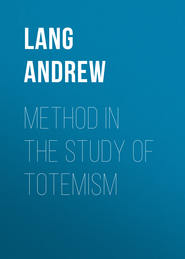По всем вопросам обращайтесь на: info@litportal.ru
(©) 2003-2024.
✖
The Animal Story Book
Настройки чтения
Размер шрифта
Высота строк
Поля
STORIES ABOUT ANTS
If any one will watch an ant-hill on a fine day in April, he will see the little inhabitants begin to rouse themselves from their winter’s sleep, which lasts from the month of October, with the red ant at all events. Groups of them come out to the top of the ant-hill to warm and thaw themselves in the rays of the sun. Some, more active and robust, run in and out, waking up the lazy, hurrying the laggards, and rousing all the little community to begin their summer habits. But this activity does not last long; they are as yet only half awake, and still numb and torpid from the winter’s cold, and the little throng increases or diminishes as the sun shines or disappears behind a cloud. As two, half-past two, and three o’clock arrive, they have nearly all disappeared inside the ant-heap, leaving only a few warriors, of a larger make and tried courage, to watch over the well-being of the little republic and to close up all openings with tiny chips of wood, dry leaves, and shreds of moss, so as to hide the entrances from human eye. Two or three sentinels wander round to see that all is secure. And then they enter, and all is still.
If we come back again in about a week, we shall find the ants in the middle of their regular migration to their summer quarters, not far from their winter ones. This takes place, with the red ant, at all events, with great regularity every April and October. The red ant is beyond doubt a slave-owner; the slaves may be easily recognised from their masters by being of a smaller make and light yellow colour. As soon as the masters have fixed the day of their ‘flitting,’ they begin probably to ensure the consent of the slaves by violently seizing them, and rolling them into a ball, and then grasping them firmly they set off towards the summer quarters at full gallop, if an ant can be said to gallop. The master ant is in a great hurry to get rid of his living burden; he goes straight ahead in spite of all obstacles, avoiding all interruptions and delays, and as soon as he arrives at the summer ant-heap, plunges in, deposits the slave all breathless and terrified from his forced journey, and sets off back for another.
Darwin, who closely studied the migrations of the ant, says that they differ in their means of transport: one sort is carried by the slaves; the other, our friend the red ant, scientifically called ‘formica sanguinea,’ carries his property carefully in his mouth. It seems strange to us that the master should carry the slave, but no stranger than it would appear to the ants if they should begin to study our habits, that some of us should sit in a carriage and be driven by the coachman. The slave, once installed in his summer quarters, seldom appears again before the autumn exodus, unless in the event of some disturbance in the camp, or its invasion by some ants of a hostile tribe, when the slaves take part in the defence and especially watch over the young ones. The slaves seem to be carpenters and miners, and warriors when necessary. They build the dwelling, repair it, of which it has constant need, and defend it in case of attack with dauntless courage. But their principal duties seem to be to take charge of the development of the young, and to feed the masters – no small task, as there seem to be ten masters to one slave, and they seem incapable of eating unless fed. Experiments have been tried of removing the slaves from them, and though sugar and every sort of tempting food is put down beside them, they will starve rather than help themselves. In fact, one wonders what the masters can be left for but to drive the slaves, which they do with great ardour. A French gentleman who spent years studying the habits of the ants, tried one day, by way of experiment, to take a slave away from its master; he had great difficulty in removing it from its bearer, who struggled furiously and clung to its burden. When at last the slave was set free, instead of profiting by its liberty, it turned round and round in a circle as if dazed, then hid itself under a dead leaf. A master ant presently came along, an animated conversation took place, and the slave ant was seized upon and borne off again to bondage. The same gentleman another day observed a slave ant venture out to the entrance to the ant-hill to enjoy the warmth of the sun. A great master ant spied it and set to with blows of its horns (antennæ they are called) to persuade it that that was not its place. Finding the slave persisted in not understanding, the master resorted to force, and seizing it by its head, without taking the trouble to roll it up, as they are generally carried, he hurled it into the ant-hill, where no doubt it received the punishment it deserved.
If we came back to the ant-heap a week after our last visit, we should find the migration finished if the weather has been fine; but ants, especially after their first awaking, are extremely sensitive to wind and rain, and only work well in fine weather. They are equally affected by weather before a storm: even though the sun may be shining, they will remain in the ant-heap with closed doors. If it is shut before midday, the storm will burst before evening; if it is shut before eight or nine in the morning, the rain will fall before noon.
All this time we have been speaking only of the red ant; but there are any number of different kinds in Europe, not to mention the enormous ants of the tropics, who march in such armies that the people fly before them, deserting their villages. Different species differ totally in their habits and ways of building and living. The greater number of species live apart, and not in a community with an elaborately constructed house like the red ant. The little black ant is the commonest in this country, and the busiest and most active. She is the first to awake, in March, sometimes in February, and the last to sleep, sometimes not till November. Their instincts and habits of activity, however, are apt to deceive them, and they get up too soon. The French gentleman already mentioned observed an instance of the kind. On February 24, after an unusually mild winter, the sun shone as if it were already summer, and it was difficult to persuade oneself that it was not, except that there were no leaves on the trees, no birds singing in the branches, and no insects humming in the air. First our friend went to examine the red-ant heap, which was closed as usual, all the inhabitants being still plunged in their winter sleep. The black ants, on the contrary, were all awake and lively, and seemed persuaded that the fine weather had come to stay. Their instincts deceived them, for that night it froze; rain, snow, and fog succeeded each other in turn, and when next he visited the ant-heap he found them lying in masses, stiff and dead, before the entrance to their dwelling.
Between the red and black ants there is great enmity, and terrible combats take place. When they fight they grasp each other like men wrestling, and each tries to throw the other down, and break his back. The conquered remain on the battlefield, nearly broken in two, and feebly waving their paws, till they slowly expire in agonies. The conqueror, on the other hand, carries away his dead to burial and his wounded to the camp, and then, entering triumphantly himself, closes the doors after him. The gentleman already quoted witnessed the funeral of an ant. He had passed the ant-heap about a quarter of an hour, and left, as he thought, all the inhabitants behind him, when he saw what appeared to be an enormous red ant making for home. On stooping to look more closely, he saw that it was one ant carrying another. He succeeded in separating them from each other, and then saw that the burden was neither a slave nor a prisoner, but a dead comrade being carried back to the ant-heap for a decent burial; for if ants fall into the hands of the enemy, they are subjected if alive to the most cruel tortures and if dead to mutilations. Usually, when an ant is relieved of anything it is carrying – whether it be a slave, a wounded ant, or some eatable – it will set off at full speed and let the burden be picked up by the next passing ant; but this one made no attempt to run away, and only turned round and round in a perplexed and irresolute way, till its dead friend was put down beside it, then it seized its precious burden and set off homewards with it. Travellers even tell that in Algeria there are ant cemeteries near the ant-heaps.
No lover of animals doubts that they have a language of their own, which we are too stupid or deaf to understand. Anyone who studies the ways of the ants sees, beyond a doubt, that they too have a way of communicating with each other. For instance, an ant was one day seen at some distance from the ant-hill, and evidently in no hurry to go back to it. In the middle of the path she perceived a large dead snail. She began by going round and round it, then climbed on its back, and walked all over it. Having satisfied herself that it was a choice morsel, but too large for her to carry home alone, she set off at once to seek help. On the way she met one of her companions; she ran at once to her; they rubbed their antennæ together, and evidently an animated conversation took place, for the second ant set off immediately in the direction of the snail. The first one continued on her way home, communicating with every ant she met in the same way; by the time she disappeared inside the ant-heap, an endless file of busy little ants were on their way to take their share of the spoil. In ten minutes the snail was completely covered by the little throng, and by the evening every trace of it had vanished.
Recent observations have proved that the time-honoured idea of the ant storing up provision for the winter is a delusion, a delusion which La Fontaine’s famous fable, ‘Le Fourmis et la Cigale,’ has done much to spread and confirm. It is now known, as we have already seen, that ants sleep all winter, and that the food which we constantly see them laden with is for immediate consumption in the camp. They eat all kinds of insects – hornets and cockchafers are favourite dishes – but the choicest morsel is a fine fat green caterpillar, caught alive. They seize it, some by its head, some by its tail; it struggles, it writhes, and sometimes succeeds in freeing itself from its enemies; but they do not consider themselves beaten, and attack it again. Little by little it becomes stupefied from the discharges of formic acid the ants throw out from their bodies, and presently it succumbs to their renewed forces. Finally, though the struggle may last an hour or more, it is borne to the ant-heap and disappears, to be devoured by the inmates. Perhaps these short ‘Stories about Ants’ may induce some of you to follow the advice of the Preacher, and ‘go to the ant’ yourselves for more.











